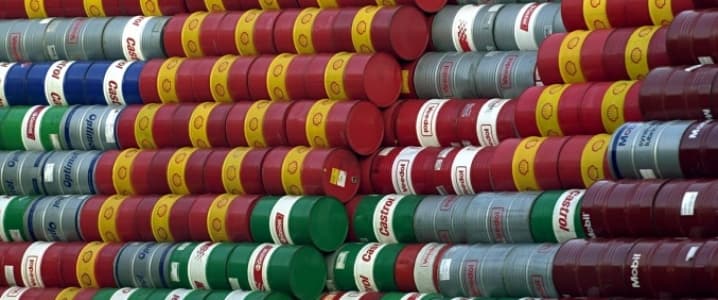Forty-seven years after the birth of Ice Cube, and the bullish sentiment in the oil market is thawing once more. As economic conditions continue to look tepid, and supply outage fears melt, crude is moving lower for a fifth consecutive day. Hark, here are five things to consider in oil markets today.
1) Back in 2007 (think: Hugo Chavez), Venezuela entered into a financial agreement with China to borrow $50 billion dollars in exchange for oil. Venezuela is now seeking a one-year grace period in this agreement as it is struggling to meet its obligations. The halving in the oil price in recent years means it has to send double the amount of oil to China to meet its commitments.
If the grace period is agreed upon, Venezuela will receive cash payments for shipments over the coming year. Around 45 percent of Venezuela’s petroleum exports to China are used to pay down debt, with PDVSA receiving cash for the rest.
(Click to enlarge)
2) Venezuela’s financial situation is in stark contrast to its resource wealth; it holds the world’s largest crude reserves. That said, these are mainly in the Orinoco basin, and are a tar-like, heavy crude which is costly to process. While the break-even for Venezuelan oil is around $21/bbl, Orinoco crude needs a price above $28/bbl to be profitable; even then it needs to be mixed with imported light crude oil or naphtha to make it transportable.
In recent history, Venezuela has been pulling in Nigerian crude to blend with its bitumen. However, since March we have not seen any Nigerian crude loaded for PDVSA’s oil facilities in Curacao. It is unlikely, however, that the halt in flows is due to Nigerian supply constraints – our ClipperData show Nigerian oil exports holding up through May at well over 1.6 million barrels per day, despite reported production losses. It could be a credit issue.
Concurrently, we have also been seeing a number of vessels carrying WTI anchored off the coast of Curacao for a number of weeks. There is market talk of a dispute about payment, but this has not been confirmed. Venezuela’s economic status appears to be going from bad to worse….
(Click to enlarge)
3) This latest piece of analysis from Wood Mackenzie estimates that worldwide investment by the oil and gas industry will be $740 billion – or 22 percent – lower from 2015 to 2020 than it would have been prior to the price fall starting in mid-2014. A further $300 billion is expected to be eliminated from exploration spending, bringing total cuts to over $1 trillion. Related: Russia’s Oil Giants Feel The Crunch But Stay In The Black
The U.S. is expected to see the deepest cuts, with $125 billion of capex slashed from 2016-2017, with a further $200 billion of cuts expected by 2020.
(Click to enlarge)
4) On the economic data front, the Eurozone saw its trade balance increase (a good thing), while in the U.S. producer prices climbed by a better-than-expected 0.4 percent, lifted by dun-dun-dun…a strong rebound in gasoline and fuel oil prices. The jump in the PPI was concentrated in energy goods. Nonetheless, prices still fell year-on-year by -0.1 percent.
Industrial production, once again, was poor – dropping 0.4 percent on the prior month. It has now fallen for nine consecutive months on a year-over-year basis. This is worrying from both an economic and a fuel demand standpoint:
(Click to enlarge) Related: Congress Shoots Down Obama’s $10 Dollar Oil Tax
5) Finally, the chart below shows OPEC’s oil revenues on a per capita basis. OPEC’s net oil export revenue for this year is estimated at $337 billion, about a third of 2012 revenues; this isn’t too surprising given the drop in prices we have seen. The distribution of this wealth, however, is much more disparate.
Revenues are distributed completely unevenly among the OPEC member countries, given some are dramatically more populous than others. While Qatar’s ~2.2 million population experiences an oil-wealth of over $18,000 per capita, Nigeria’s population – the seventh most populous country in the world at ~186 million – barely feel the benefit. As the Bloomberg piece points out, no wonder they are experiencing unrest:
(Click to enlarge)
By Matt Smith via ClipperData
More Top Reads From Oilprice.com:
- OPEC, IEA Agree: Oil Markets to Balance Later This Year
- All New Cars To Be Emission Free In Germany By 2030
- Oil Falls As IEA Report Cannot Offset Strong Dollar























